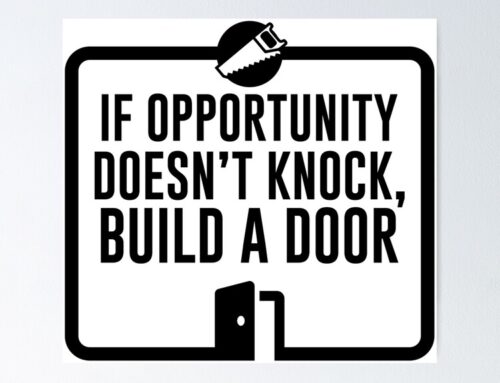5 myths about teamwork you need to forget to work better

Don’t let the common myths about teamwork steal your team’s shine. Debunk them with our tips and help your team get a grip on the road to success.
Whether we choose to or not, we spend much of our lives working with other people, yet we commonly develop a deep hatred for the practice (remember college group projects?). That’s not surprising, because, despite our best efforts, teamwork sometimes fails and becomes very stressful.

Often the reason behind this failure is the implementation of false beliefs and our expectations around how a team should work. We’re all guilty of sticking to certain myths about teamwork to a degree, mostly because they sound like common sense to us. In reality, many of them are quite harmful.
Luckily, we’re here to debunk some of the most common ones and help you avoid the potentially devastating effects they can have on your team!
Myth no. 1: Great performing teams work together in perfect harmony*
Table of Contents
Following this philosophy will shoot you straight into Groupthinkville, estimated population: your team. The term groupthink was first established in 1972 by the social psychologist Irving L. Janis, when he described the phenomenon of team members striving for consensus despite the less-than-ideal consequences.
He noticed that people set aside their own personal beliefs and adopt the opinion of the rest of the team to avoid conflict. This leads to suppression of individual opinions and creative ideas, sometimes resulting in poor decisions and inefficient problem-solving.
Harmonious relationships amongst team members are something you should strive for, but don’t forget about the power of healthy disagreement. Research show that conflicts, when well managed and focused on team’s objectives can foster great creative solutions.
Practical advice to avoid the trap of groupthink?Encourage constructive criticism and feedback. Constructive criticism should be factual, impersonal and timely.
You ought to say, “I gave it much thought and believe that this presentation, which was well prepared btw., doesn’t fit our target audience at the moment. As stated in the market report earlier this month, the target audience responds better to facts and figures rather than storytelling. Could we please make some changes before this document goes out at the end of the week?”
This kind of approach creates a good environment and opens a healthy discussion.

Myth no. 2: Bigger is better
Two heads are better than one, but twelve might make teamwork worse. Expanding the team has its limits and leaders often make teams too big while trying to make them homogenous.Although larger groups may offer more resources and a wider range of solutions, they can also easily fall into the trap ofsocial loafing.
People have a tendency to increasingly underestimate task completion time as team size grows. – Bradley Staats, Katherine Milkman, and Craig Fox
Practical advice? Follow the “two-pizza team” philosophy of one of the greatest entrepreneurs of our time, Jeff Bezos. He believes that no matter how large your company gets, individual teams shouldn’t be larger than what two pizzas can feed, ergo developing more meaningful relationships and coming away with new ideas and inspiration.

Myth no. 3: Team lead is responsible for everything
Many people believe that the responsibility for good teamwork rests on the shoulders of the leader. After all, so many articles about teamwork focus on leadership styles and behaviors.
In a way, our advice falls into that category – but there’s a twist! The most powerful thing a leader can do to foster effective teamwork is to create an environment helping team members competently manage themselves on their own.
Specially in cross-functional teams, effective teamwork is a by-product off how teams manage themselves.
As Heath Evans explains: “The greater leaders I’ve ever worked with have never relied on their power to influence my efficiency or productivity. Instead, they chose a posture of generosity and trust, and in doing so I felt I was seen, I was heard, I mattered, I was valued. Ultimately I was capable of more than I had ever imagined – this has been the most effective approach to leadership I have encountered and more powerful than any hack or hustle to shortcut that human investment.”

Building a team is a series of specific communications or conversations that occur between people who share responsibility to get something done. Team members can and must learn to have these conversations on their own, to trust each other and foster healthy relationships, particularly since a manager or consultant isn’t always there. – Source
Practical tip? Delegate tasks and hand over the leadership baton from time to time. Start by explaining why you will delegate a task and provide correct and clear instructions. “When you select people to delegate, tell them why you chose them specifically, and how you hope to see this help them grow. Help them see each delegated task as an opportunity to take on more responsibilities or grow new skills,” says Alex Cavoulacos founder of The Muse.
On top of that, you ought to delegate results rather than methods. For example; Here’s what we are doing instead of following up on those leads. Tell someone your goals, you hope to achieve and let them tackle the problem in their own way. Don’t ever look for perfection or micromanage. Never forget to say thank you.
“When someone or your team completes a task you delegated, show appreciation and point out specific things they did well. This is the simplest step, but one of the hardest for many people to learn. It will inspire loyalty, provide real satisfaction for work done, and become the basis for mentoring and performance reviews,” Forbes expert Zwillig says.
Myth no. 4: You need many tools to have efficient teamwork
Work culture is changing as we speak. We have come a long way from sitting in a cubicle, 9-5 and five days a week. Working from home or remotely from another country is now becoming a norm for some companies. On top of this, we’re now using more tools than ever! We have tools to manage projects, better communicate, track tasks etc.

But are all of these platforms really necessary to achieve efficient teamwork? Not really. Let’s look at some stats: a marketing team uses an average of up to 5 different tools for daily task management, some 21% even more, from 6-10 tools. A total of 82% of marketing and sales people lose up to one hour per day managing and switching between platforms. To sum it up, 69% of team members waste up to 32 days throughout the year by dealing with communication and workflow platforms. Surprising fact, 66% of the surveyed workers want a single collaboration and communication tool.
RingCentral CMO Riadh Dridi: “Today’s workforce is under siege by a flood of communications apps. More than ever, our attention is scattered across a wide array of different apps and communications channels. These apps are meant to bolster our productivity, but managing myriad apps is proving difficult—with serious repercussions for businesses.”
Practical tip: decrease the number of apps you use to a minimum. When it comes to communication, you could even bring the number down to one. Sounds impossible? We beg to differ!
Myth no. 5: All you need is a group of people with the right skills
Teamwork makes the dream work. All one has to do is gather some talented people with specific skills, tell them in general terms what needs to be done and the work will speak for itself. Well, not quite.
When teamwork is important, skills should come after factors like drive, energy, interest, motivation, and enthusiasm because it’s shared desire-not talent- that creates teamwork. It’s also true that low motivation is more infectious on teams than high motivation. And while skilled individuals act within their roles, committed team members improvise to get the job done. – Source

It takes careful thought and preparation to create something successful. Having a team with the right skills is not always enough and sometimes what’s needed is compromise and reliability.
If a team can compromise with each other, they’ll be able to reach the best possible solutions and gather great ideas together. Knowing when to compromise is not only beneficial for results but also great for team dynamic. The same applies for reliability. If a team can count on their peers being around for them then trust can start to build which could lead to greater success.

Practical tip: Although being a big responsibility and risk, choosing the right people for your team and the project can be a very rewarding task. And here’s what or better yet whom you should be after:
– Excellent communicators: people who are receptive, know how to listen;
– Resourceful and influential individuals: seek for team members who can dig deeper when searching for ideas and know their ways around different means of resources, human wise or online based, while also having professional connections with different organizations, individuals or clients;
– Proactive employees: proactivity is an essential component of every team, as the work heavily depends on the activity of each of your team members’ combined. This way you can assure that your project will run smoother and faster than you would expect;
– Skills and knowledge over certificates: look for knowledge and experience over certificates. The candidates should prove they are capable of being productive by showing their skills and knowledge, and not just a paper that only states the achievement of finishing college or courses.
And the team lead? Your role is to motivate your team and give them every opportunity to grow. Offer training workshops, set up a mentoring program and have regular team-building exercises. Bring fun back into your team by planning lunches, trips and events. Show each person that their work matters and encourage them as you go along. Be a truesuperboss:
Author : Jernej Pavlic

206-391-5682
i2i@i2idirectmarketing.com
www.i2idirectmarketing.com
“…all deliveries GPS tracked…”




